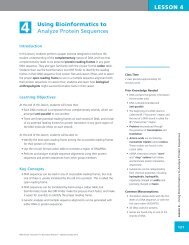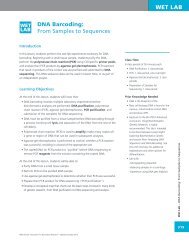57 Students discuss an ethical dilemma that is readily ...
57 Students discuss an ethical dilemma that is readily ...
57 Students discuss an ethical dilemma that is readily ...
You also want an ePaper? Increase the reach of your titles
YUMPU automatically turns print PDFs into web optimized ePapers that Google loves.
Teaching BackgroundClassic Ethical DilemmasSummary<strong>Students</strong> use simple classic <strong>dilemma</strong>s to learn about or reinforce theirunderst<strong>an</strong>ding of <strong>ethical</strong> theories <strong>an</strong>d perspectivesStudent H<strong>an</strong>dout: Classic Ethical DilemmasTeacher InstructionsBefore learning about <strong>ethical</strong> perspectives:Have small groups of students brainstorm their solutions to thevarious problems. Use the <strong>d<strong>is</strong>cuss</strong>ion as a way to teach the <strong>ethical</strong>perspectives by introducing them <strong>an</strong>d showing how each <strong>dilemma</strong>would be addressed using <strong>that</strong> theoretical lens.After learning the <strong>ethical</strong> perspectives:If students have already been exposed to <strong>ethical</strong> perspectives <strong>an</strong>dtheories, these <strong>dilemma</strong>s are a way of reinforcing <strong>that</strong> learning.Ask students to develop <strong>an</strong>swers to the <strong>dilemma</strong>s from the variousperspectives.Note: These <strong>dilemma</strong>s c<strong>an</strong> also be used in conjunction with the‘Introduction to the Dec<strong>is</strong>ion-Making Model’ activity. Additionalsample cases are provided in the Appendix.59
















